

 STUART JORDAN looks at the building of this bridge between Denmark and Sweden.
STUART JORDAN looks at the building of this bridge between Denmark and Sweden.
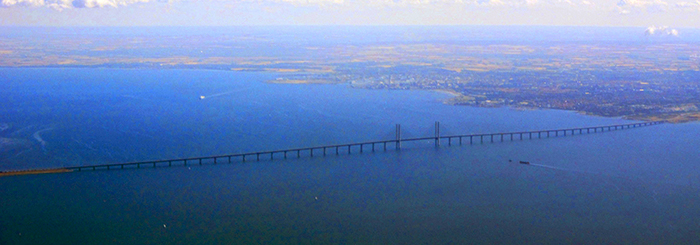
The Øresund Bridge, looking towards Malmö in Sweden.
The Øresund (The Sound) is the strait of water which divides the Danish island of Zealand with the province of Scania in Sweden. The two major cities on either bank are the Danish capital Copenhagen, and the Swedish city of Malmö, facing each other over 9 miles of water.
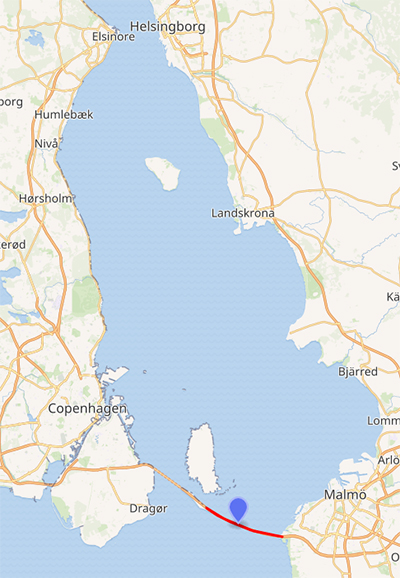
The Øresund, with the bridge marked in red.
In 1910, the Swedish government looked at proposals to link the two cities with a railway tunnel. This proved impractical at the time and it wasn’t until 1936 that a bridge was proposed. Throughout the 1950s and 60s the two countries argued about the placement of the bridge – whether it should serve Copenhagen and Malmö or be placed further north at the narrowest point of the Øresund between Helsingør and Helsingborg, where a ferry operates.
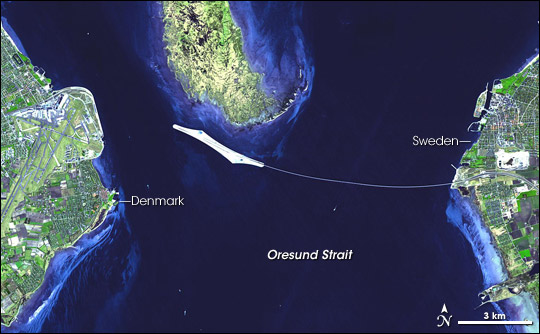
NASA images of Øresund Bridge.
It wasn’t until the 1970s that the Copenhagen/Malmö site was chosen. A bridge would run from Malmö to the Danish island of Saltholm, where a tunnel would take traffic to the mainland. This would allow shipping to continue to and from the Baltic without passing under the bridge. Later, the plans were changed – instead of Saltholm, an artificial island was built in the centre of the Øresund to start the tunnel from. This island was named Peberholm, literally ‘Pepper Islet’ to match the ‘Salt Islet’ Saltholm next to it. The new bridge was meant to be paired with a tunnel between Helsingør and Helsingborg, but to date the tunnel has not been built.
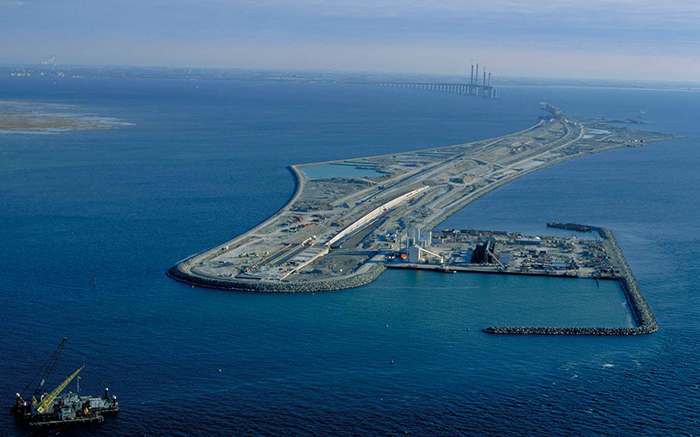
Peberholm island under construction.
Construction on the Øresund Bridge and tunnel began in 1995 by companies Hochtief, Skanska, Højgaard & Schultz and Monberg & Thorsen. All but the German company Hochtief were Scandinavian firms. The bridge was to be built in a girder and cable stayed design, with 57 metres of headroom for shipping under the span. The underwater parts of the bridge have been induced to act as an artificial reef.
The cost of the bridge in total was 30 billion Danish Krone (4 billion euros) and was paid for and jointly owned by the Danish and Swedish governments. The cost of construction was paid for by loans, so there was no cost to the taxpayers. The loans and interest are being paid back by toll payments for crossing the road bridge. It is estimated that it will be paid off completely by 2034.
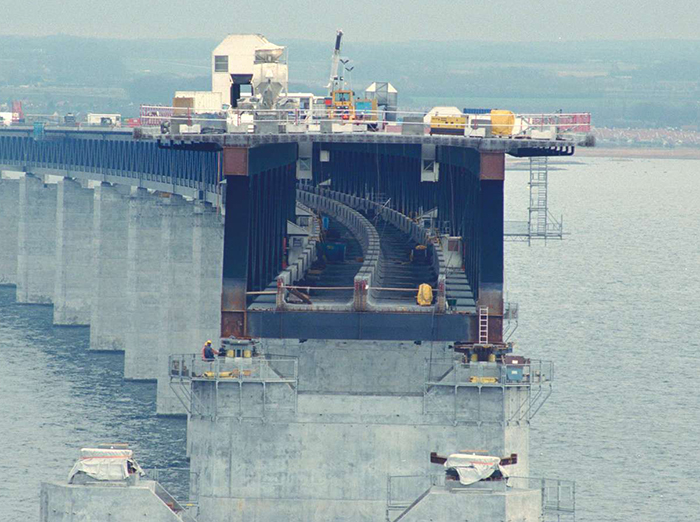
A cross-section of the bridge under construction, clearly showing the railway lines under the roadway.
The bridge is 5 miles long, running from Malmö to Peberholm. Two railway tracks are suspended underneath a four-lane road – it is the longest combined road/rail bridge in Europe. Once it reaches Peberholm the traffic transfers to the 4050 metre long Drogden Tunnel, where the road and rail tunnels are now side-by-side. The tunnel emerges on the Danish island of Amager, which is home to Copenhagen Airport. The airport station is the first station the train reaches on the Denmark side of the tunnel.
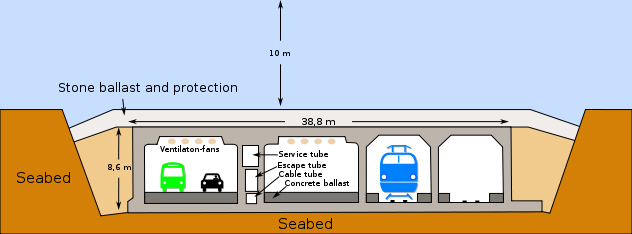
Diagram showing the layout of the Drogden Tunnel.
Passenger and freight services both use the bridge. Passenger services are run by Transdev and SJ from Sweden and DSB from Denmark. Once trains have arrived at Copenhagen, they often continue up the coast to Helsingør. SJ run high-speed services from Stockholm to Copenhagen via Malmö. Freight services across the bridge are run by DB Cargo. Due to the link up with the European rail network via the German border, the bridge has been depicted as a symbol of the connection between Scandinavia and the rest of Europe – it was used during the 2013 Eurovision Song Contest as part of the theme.
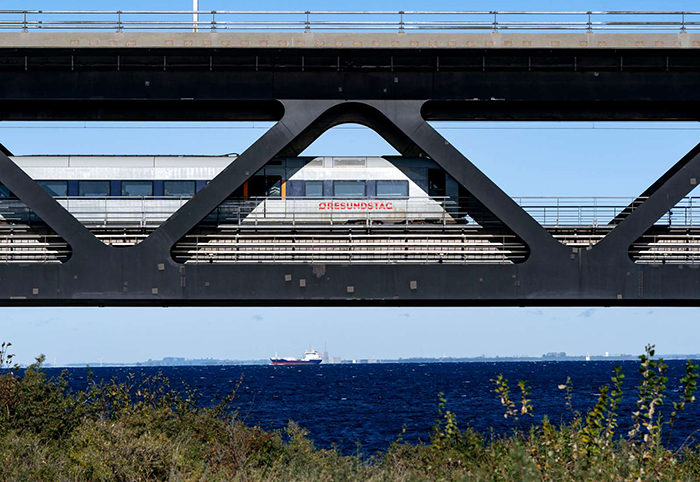
Øresundståg train crossing the bridge.
Trains in Denmark and Sweden use different voltages, so any locomotive running across the Øresund Bridge must be dual voltage. The Danish voltage is used across the whole bridge and tunnel. The countries also have different signalling systems. This is solved by the Swedish system being used on the bridge before switching to the Danish system in the Drogden Tunnel.
The bridge is famous not only for being a fantastic piece of engineering, but also due to its (very obvious) connection to the Nordic Noir series ‘The Bridge’. That wasn’t the reason why I travelled across it in 2017 – I know it as the inspiration for the song ‘Walk Me to the Bridge’ by the Manic Street Preachers – but that’s enough pop culture references… songs written about railways are a whole other article.